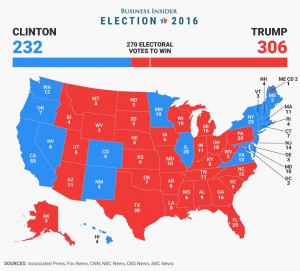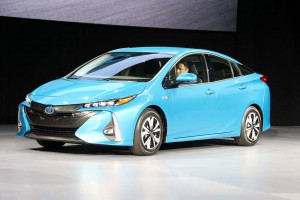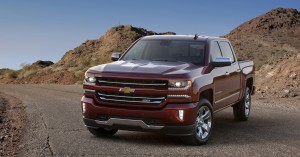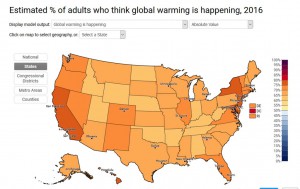It’s often said that you are what you drive. And that apparently translates into how you vote.
A new study reveals that demand for battery-electric vehicles, or BEVs, and other “green” cars is strongest in states that voted for Hillary Clinton in the last election, while sales of environmentally friendly vehicles is generally far lower in states that backed Donald Trump.
“In some parts of the country buyers look at the Toyota Prius as a toy, something real men don’t drive,” said Peter Levy, CEO of the data-based car buying site Carjojo.com. “In other parts of the country, a Tesla and the Chevrolet Bolt are status symbols.”
On the whole, hybrids, plug-ins, BEVs and hydrogen fuel-cell vehicles, or FCVs, accounted for barely 3% of the U.S. new car market in 2016. But those numbers vary widely by region. Demand for green machines has traditionally been strongest out West – the Prius being the single biggest seller in California during some recent years – and weakest in the Midwest, according to industry data analyzed by Carjojo.
Some of the reasons why are obvious, said Levy. States where demand for plug-based vehicles is highest generally have several factors in common:
- Higher fuel prices that encourage a shift to relatively cheap electric power;
- State subsidies that can further enhance the federal incentives on qualified models like the new Prius Prime plug-in hybrid and the Chevrolet Bolt EV; and
- A more readily accessible public charging network.
There are other, more speculative factors at work, added Carjojo CEO Levy. In states with lower demand for green cars, such as Texas and Florida, fuel prices tend to be lower. There are fewer public charging stations, and driving distances are typically greater, meaning motorists experience more range anxiety with battery-based vehicles.
 (Despite Trump threats, auto imports from Mexico continue to rise. Click Here for the latest.)
(Despite Trump threats, auto imports from Mexico continue to rise. Click Here for the latest.)
There also seems to be a fairly direct correlation between interest in alternative power and concerns about the environment. Trump voters “tend to live in parts of the country more likely to poo-poo environmentalism” and concerns about global warming, said Levy.
That correlates with a 2016 study by Yale University that illustrates an almost direct correlation between how individual states voted in the presidential election and the percentage of their residents “who think global warming is happening.”
The states most worried about climate change include New York and California, where sales of BEVs and other green cars are strongest – but where voters went for Clinton in 2016. States far less worried about global warming, notably including Idaho, Wyoming, West Virginia and Alabama, were solidly in the Trump category last November.
According to the Carjojo analysis, there were over four green cars sold for every 10,000 residents in the Western region during the fourth quarter of 2016 and the first quarter of 2017.
By comparison, there was just one per 10,000 residents in the Midwest, and 1.22 per 10,000 residents in the South.
(Automakers hoping Trump infrastructure plan will head off sales slump. Click Here for more.)
The study reflects the strategy a number of automakers have taken in recent years. The new Hyundai Ioniq EV, for example, will only be sold in select Western states, an approach used for a number of other battery-based models. All three of the fuel-cell cars now on the market – the Honda Clarity FCV, the Hyundai Tucson FCV and the Toyota Mirai – are being sold only in select parts of California, though that largely reflects the limited availability of the hydrogen fuel they require.
With automakers promising to rapidly increase the number of battery-cars they plan to offer, the new study could serve as a note of caution. But Levy said there’s another correlation automakers should consider. Residents of Western and Northeast states were also the first to adopt smartphones when they began coming to market 10 years ago. The rest of the country has now followed.
Levy says the same thing could happen with green cars, especially plug-ins and BEVs, as prices drop, range grows longer and the public chargers become much more common.
(Trump open to hiking gas tax. To find out why, Click Here.)




To put it another way, If you believe the environmentalist wackos you’ll even believe Hillary.
It’s true, at least in that, to get the exact Chevy Volt I wanted, I had to travel to New Jersey (from central PA), as there were few to choose from here.
Part of this is education. I found myself telling earnest but clueless salespeople about how the Volt works, its advantages over a straight electric, etc. If *I* have to teach the sellers about their own vehicles, what hope do the average people out there have of having this knowledge?
Since its 2010 introduction, I’ve only seen 2 or 3 other ones on the road around here.
The thing is, I’m NOT a Leftwing ‘nutjob’. I just wanted an electric car to commute with.